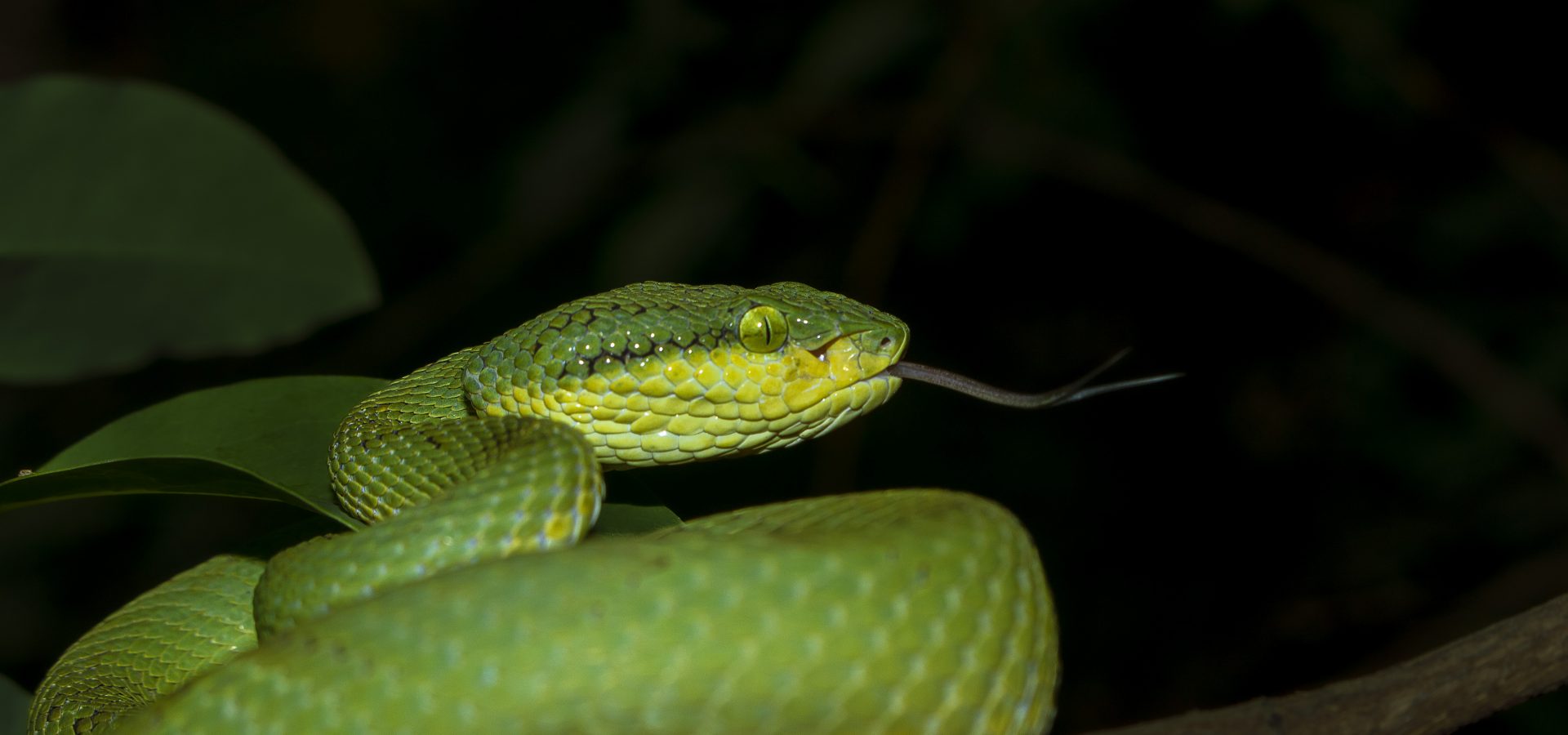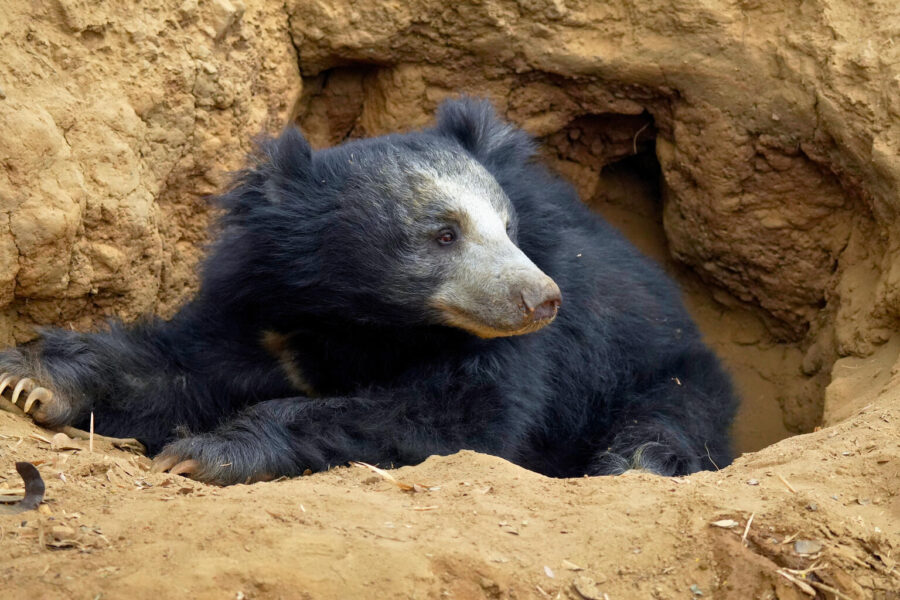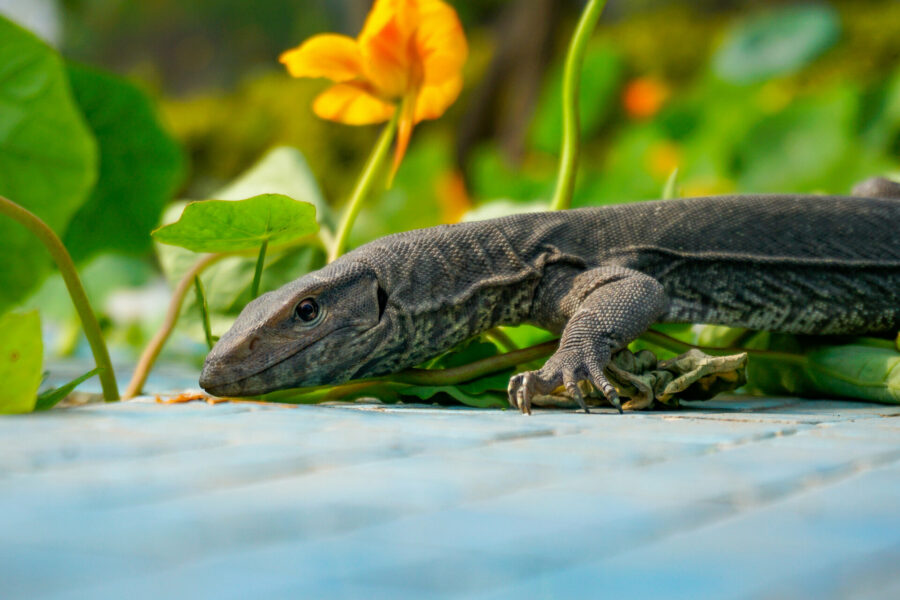Bamboo is one of the most important plant species in the world. In India, it is widely distributed over 15.69 million hectares of land. Of the nearly 148 species found here, most have been recorded from the north-eastern parts of the country. Bamboo grows at a fast rate, and is a vital resource. It is useful as food (fodder, pulp and edible shoots), for alternative medicines made from bamboo charcoal, and as a strong substitute for wood. Such rich benefits beckon the proverbial phrase of bamboo being the “poor man’s timber”. India is the world’s second largest cultivator of bamboo, only second to China. It may come as a surprise to know that nearly 10 million people depend solely on bamboo for their survival. Bamboo is not only crucial from a socio-economic aspect, but it is ecologically valuable too!
Bamboo forests are rich habitats for innumerable wildlife species. Bamboo shoots, stems and leaves are dietary sources for many animals. Moreover, their dense canopy provides ample protection to them. A group of such plants also creates a life-supporting microhabitat for small and large animals!
Here are some animals of India that are known to readily claim bamboo forests as their home!
Gaur
Gaur or the Indian Bison, is one of the heaviest land mammals in the country. The large ungulate is listed as Vulnerable by IUCN and receives protection in Schedule I of the Wildlife (Protection) Act, 1972. Its population is distributed across the Western Ghats, central highlands, and the northern eastern regions. Across the landscapes, this megaherbivore is dependent on a large variety of plants.
A study was conducted at the Bandhavgarh National Park located in the hills of Madhya Pradesh after the animal had been successfully reintroduced there in 2011. According to the authors, gaurs grazed on the green foliage of bamboo, especially during the monsoon and winter seasons. The Indian Bison play a crucial role in controlling the habitat structure and various ecological functions. As a herbivore, it ensures the cycling of nutrients in the soil and even tramples plants to make way for new species.
Elephants
Another herbivore that is known to feed on tender bamboo plants is the Asian elephant. The largest land animal on the entire continent requires an average of 150 kilograms of food per day to survive in the wild! While most of their time is spent grazing, elephants also indulge in tree barks, roots, leaves, and stems. Bamboo is an all-time favourite that accompanies their elephantine diet of cultivated crops such as bananas, rice and sugarcane. The tall shoots also help in providing shade to the elephants as they move around the forests.
Every year as the summer sets in, elephants along with gaurs embark on a seasonal migration to Wayanad Wildlife Sanctuary in Kerala. They move here from the dry parts of Mudumalai, Bandipur, and Nagarhole in search of adequate food and water resources. In the Wayanad region, these gentle giants relish bamboo that is found in large groves.
Back in 2006, the Uttarakhand Forest Department planted these trees to steer 180 wild elephants into the Lansdowne forests. This solution prevented crop raiding by elephants in neighbouring agricultural lands. To stop human-elephant conflict situations, the Odisha government has launched a project this year that involves filling up bamboo seeds in soil balls within the state’s forests. Bamboo, therefore, has proven to be a key ingredient for the safety of both humans as well as elephants.
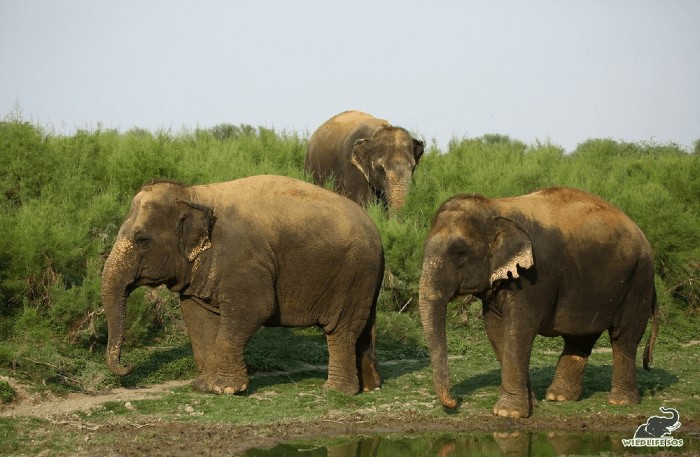
Bamboo Pit Vipers
These pit vipers primarily receive their name from the habitat they occupy — the cool bamboo foliage! The Indian Green pit viper is endemic to the country and can be found in parts of the Western and Eastern Ghats. Slowly slithering through the jungles at night, the solitary viper prefers an environment near streams with an abundance of prey. The snake relies on a diet of rodents, birds, and other small animals, and it camouflages well within the cover provided by the lush plants.
Red Pandas
Known for its plant-heavy diet, the Red panda can be found in the north-eastern parts of India, as well as in Nepal, Bhutan, Myanmar, and China. The Himalayan flagship species is categorised as Endangered on the IUCN Red List. While it primarily feeds on leaves and shoots of bamboo, the animal may also consume fruits, roots, eggs, small mammals, and insects. In fact, the name ‘panda’ is derived from the Nepali word ‘ponya’, which means plant-eating animal. Although the Giant panda also heavily feeds on the plant, it is not genetically related to the Red panda.
Red pandas possess claws that are curved in a way that assists them to live on trees and consume the plant easily. Nearly 95% of a Red panda’s diet comprises bamboo. Female red pandas can even chew on nearly 20,000 leaves in a single day!
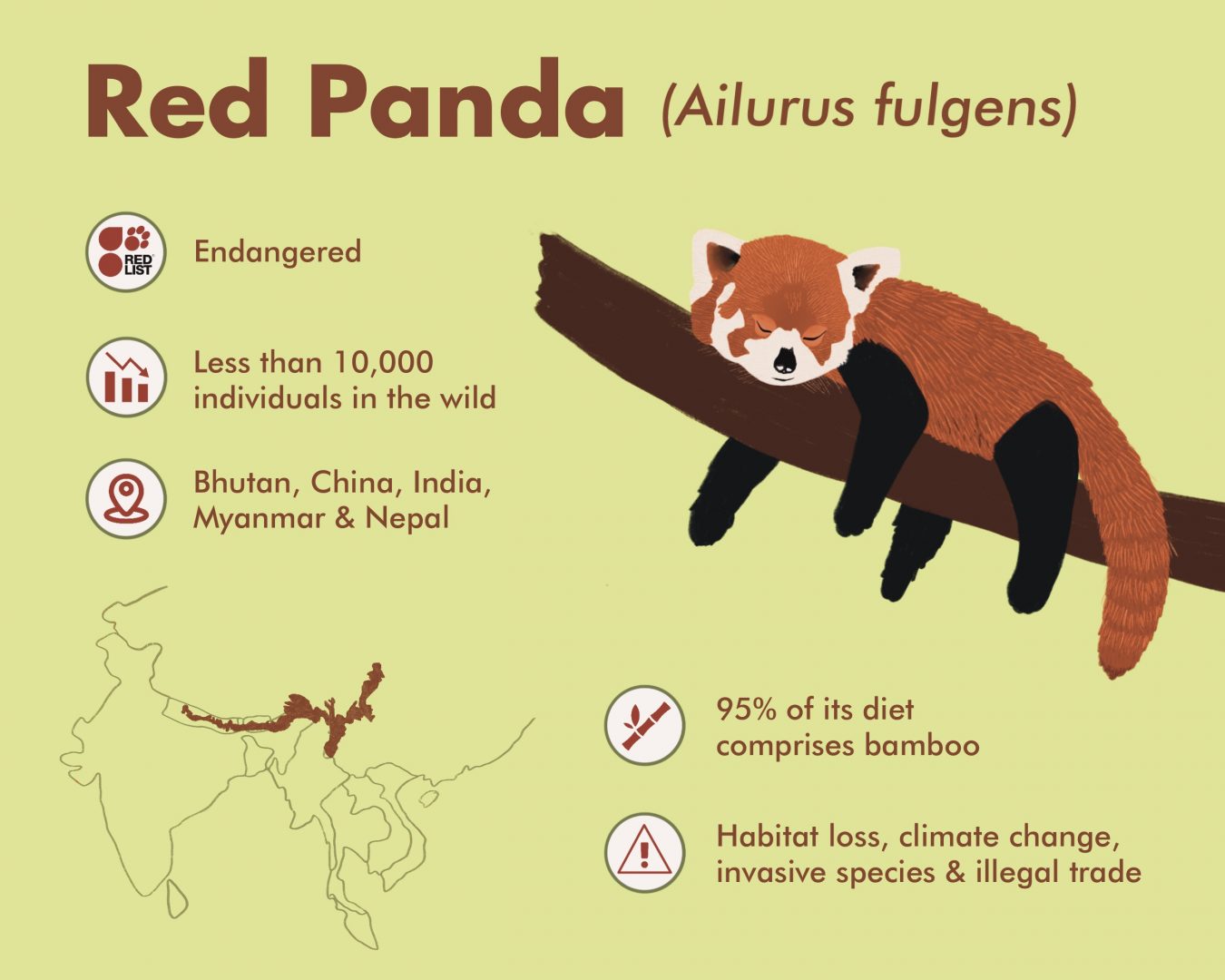
Birds
Like other animals, numerous birds, too, reside in the thickets of bamboo. In the Chandaka-Dampara Wildlife Sanctuary of Odisha, the flowering of bamboo trees led to many bird species flocking to the site — Red junglefowl, Jungle babbler, peafowl and bulbul are some of them. In an effort to sustain the dwindling population of peafowl in the Pakidi hills of Odisha, a team led by Pramila Bisoyi, environmentalist and Member of Parliament, initiated the planting of bamboo in 2020. The forests are now lined with hundreds of bamboo bushes, which allow peahens to lay eggs under dense foliage. A bird listed as Critically Endangered by IUCN called Bugun liocichla was recently spotted in Arunachal Pradesh in a bamboo forest. The rare bird has been spotted only a few times since 2006.
The List Doesn’t End…
Besides the four species above, numerous other animals either completely or partially rely on such forests. Bamboo bats specifically reside in regions abundant with the plant. The tiny Lesser bamboo bat, for instance, roosts within the matured shoots of bamboo. It enters the shoot through minute holes pierced by beetles. In 2015, researchers also found a new subspecies of Bamboo bats from the north Andaman Islands that have flat skulls. A new Thick-thumbed bat species was also discovered in these forests of Meghalaya earlier this year.
Insects such as butterflies are also known to occupy these forests in India. Common silverline, Lime butterfly, and Small grass yellow are ones that are found in the bamboo forests of Kumily, Kerala. Here’s a revelation: a troublesome pest known to consume plants with gusto is the termite! It isn’t just wood, termites can also make untreated furniture their meal.
Wildlife SOS centres are also planted with bamboo to promote native animal biodiversity. Birds, rodents, and civet cats are frequently spotted amongst the clumps. The Sloth bears residing at the Bannerghatta Bear Rescue Centre often spend time under the cool shade of these trees. The dense foliage provides these animals with cover and a perfect environment to forage for ants and termites!
For more interesting stories on nature and wildlife, subscribe to the Wildlife SOS newsletter!

